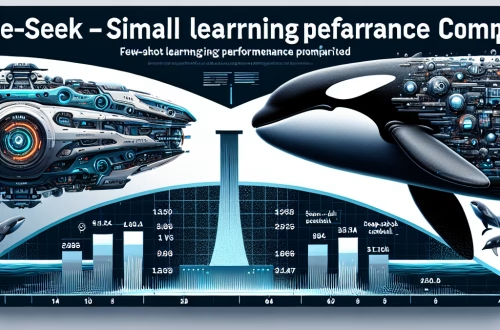Summary:
Claude 4 and Microsoft Copilot Studio represent two distinct approaches to AI-powered productivity. Claude 4, developed by Anthropic, excels in deep reasoning, long-form content generation, and ethical safeguards, making it ideal for research-intensive tasks. Microsoft Copilot Studio focuses on business process automation through no-code bot creation, deeply integrated with Microsoft 365 ecosystems. For novices, understanding these tools’ capabilities helps determine which aligns best with specific needs—whether creative ideation or enterprise workflow automation. Both tools showcase how specialized AI models are transforming work but serve fundamentally different use cases.
What This Means for You:
- Streamline specialized tasks: Claude 4’s advanced reasoning suits academic drafting or technical documentation, while Copilot Studio automates repetitive tasks like data entry. Identify pain points in your workflow to choose the right tool.
- Maximize existing software investments: If your organization uses Microsoft 365, Copilot Studio offers seamless integration. Action: Audit your current tech stack before committing to avoid redundant tools.
- Prioritize security with sensitive data: Claude 4’s constitutional AI design minimizes harmful outputs but requires careful prompt engineering. Action: Always anonymize data when testing either system.
- Future outlook or warning: Expect rapid capability expansion in both tools, but AI hallucinations remain a persistent risk. Establish human review protocols now rather than assuming AI outputs are error-free.
Core Architectural Differences
Anthropic’s Constitutional AI Framework
Claude 4 operates on Anthropic’s “constitutional AI” principles, prioritizing harm reduction through built-in ethical constraints. Unlike rule-based filters, its training methodology embeds safety considerations at the model’s foundation. This enables superior performance in handling sensitive topics compared to most enterprise-focused tools.
Microsoft’s Hybrid Orchestration Engine
Copilot Studio combines Azure OpenAI models with proprietary connectors and logic flows. Its strength lies in stitching together pre-built templates (for CRM, HR, etc.) with natural language processing, functioning essentially as an automation layer atop existing Microsoft infrastructure.
Capability Comparison
Natural Language Processing
Claude 4 Dominates:
– 200K token context window vs Copilot Studio’s ~4K
– Nuanced tone adjustments (angst-to-professional translations)
– Research paper summarization with cross-source synthesis
Copilot Studio’s Edge:
– Pre-built industry-specific dialog trees
– Automatic entity recognition for Microsoft Dataverse
– Multi-language bot deployment at scale
Integration & Deployment
Claude 4: API-centric with limited native integrations (Slack, Notion confirmed). Requires developer resources for complex implementation.
Copilot Studio: Visual workflow builder connects to 1,000+ Microsoft/third-party apps via Power Automate. Business analysts can deploy bots without coding expertise.
Customization & Governance
Claude 4’s Custom Instructions: Users can enforce strict output formats (e.g., “always cite sources”) through persistent system prompts.
Copilot Studio’s Admin Controls: Centralized compliance dashboards track bot interactions across Teams, Outlook, etc., meeting FINRA/HIPAA audit requirements.
Strategic Use Cases
When to Choose Claude 4
- Market research synthesis (combining 50+ analyst reports)
- Creative campaign ideation with brand voice consistency
- Legal contract redlining with change justification
When Copilot Studio Excels
- IT helpdesk triage via Teams
- Dynamics 365 CRM data enrichment
- Employee onboarding workflows in SharePoint
Key Limitations
Claude 4’s Constraints
- No built-in GUI – pure API/text interface
- Minimal real-time data processing (web access in beta)
- Higher computational costs for extended sessions
Copilot Studio’s Weaknesses
- Limited creative ideation beyond template parameters
- Steep learning curve for non-Microsoft ecosystems
- Bottlenecked by Azure OpenAI’s model update cycle
People Also Ask About:
- Can Claude 4 connect to my business applications like SAP?
Not natively. While Claude 4 offers API access, integration requires custom middleware development. Copilot Studio has pre-built SAP connectors via Power Platform. - Which handles non-English languages better?
Copilot Studio supports 100+ languages for basic bot interactions but struggles with dialect nuances. Claude 4 delivers superior quality in 20 core languages, including Japanese technical documentation. - Is my data safe for proprietary R&D projects?
Claude 4 allows data retention controls, while Copilot Studio data resides in Microsoft’s tenant-locked environment. Both meet SOC2 compliance, but highly sensitive IP should use isolated deployments. - Can either tool replace customer service staff?
Not fully. Claude 4 excels at composing detailed responses but lacks conversation state tracking. Copilot Studio automates tier-1 queries but requires human escalation paths for complex issues.
Expert Opinion:
The Claude vs Copilot decision hinges on whether organizations prioritize creative augmentation or process automation. While both tools demonstrate impressive capabilities, responsible deployment requires strict QA protocols. Emerging regulations like the EU AI Act may impose additional compliance burdens, particularly for Claude’s open-ended generation features. Users should implement metadata tagging for all AI-generated content now to streamline future audits.
Extra Information:
- Anthropic Claude Documentation – Technical specifications for Claude 4’s API and safety protocols.
- Microsoft Copilot Studio Guide – Official tutorials for building enterprise bots.
- Constitutional AI Research Paper – Foundational framework behind Claude’s ethical architecture.
Related Key Terms:
- Anthropic Claude 4 enterprise API integration
- Microsoft Copilot Studio Power Platform customization
- Business process automation AI tools comparison
- Ethical AI safeguards for large language models
- AI workflow deployment costs analysis 2024
Check out our AI Model Comparison Tool here: AI Model Comparison Tool
#TechnicalFeatureFocused #Headlines
*Featured image provided by Pixabay





